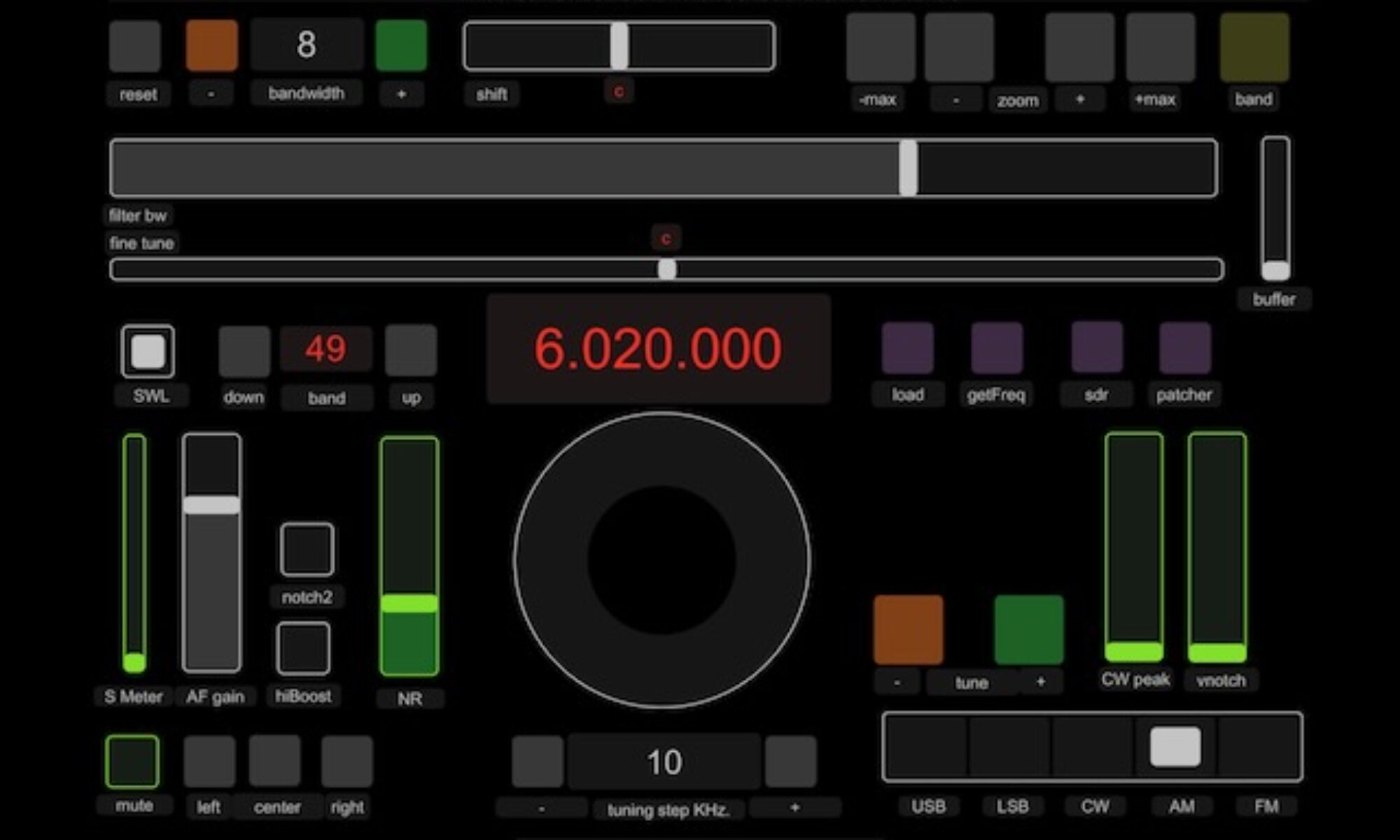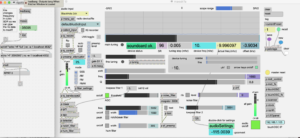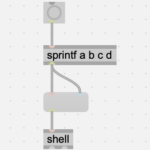Another working prototype with Max and CubicSDR
Now working some better… The Max SDR patch is receiving an IQ audio stream at 96 KHz from CubicSDR and sending frequency data to rigctld daemon via a python script that recodes OSC to tcp data.
repository: https://github.com/tkzic/max8radio
Files:
max8sdr1.maxpat
py3rigctl2.py (python script)
Instructions:
Basically the same as instructions in the previous prototype here: https://reactivemusic.net/?p=19995
make sure to start the rigctl daemon before CubicSDR
rigctld -m 1 4532 &
And make sure there is some audio gain on CubicSDR
But… There is only one Max patch now and – after you start the rigcltd daemon, you need to run the python script in the max8radio folder like this:
python3 py3rigctl2.py
The most important thing is to start CubicSDR first before you run the Max patch. Make sure to get everything working correctly. Then start the Max SDR.
In CubicSDR make sure you only have one “modem” running – otherwise the IQ data stream will be a complete mess. Als0 make sure that the audio sample rate in CubicSDR is set to 96 KHz. It will revert to 48 KHz. everytime you load the program. You can use the ‘bookmarks’ from a previous CubicSDR session (lower left part of the screen) to load a previous session with the same parameters.
These are the necessary settings:
- I/Q modem
- Audio out: Existential Audio Inc. Blackhole 2 ch.
- Audio sample rate: 96 KHz.
- Rig Control Menu: enable rig and follow rig should be ‘checked’
- Frequency should equal Center frequency and the V delta lock toggle should be on
- Demodulator Gain level should be very low to prevent excess AGC (upper right corner)
Actually if you have loaded everything ok in a previous session, try this:
- get the rigctld daemon running from the command
- load CubicSDR
- First thing: click ‘enable rig’ under rig control (this will probably load some crazy frequency like 145 Mhz
- Then in the bookmarks (lower left) double click on your previous session, under ‘recents’ for example: 7007MHzI/Q – this should restore almost all the settings.
- Then change the audio sample rate to 96 KHz if needed.
- If the input to Max seems wrong, try clicking the S (over near the top right) to solo the modems. There may be more than one going.
Max settings
- Set audio input to Blackhole 2ch @ 96 KHz. (to match output from CubicSDR
- Click the ‘flip IQ’ toggle – for some reason CubicSDR sends out the I/Q signal flipped
- The arrow key tuning and all other tuning methods should work now
Notes
One of the problems with CubicSDR is sometimes you’ll accidentally change something and all the settings go crazy.
note: I tried a new version of CubicSDR (2.6) from the sdrplay website. It would not detect any connected devices or audio drivers.
Once you get it working, the audio quality inside Max is excellent – using the Airspy HF+






